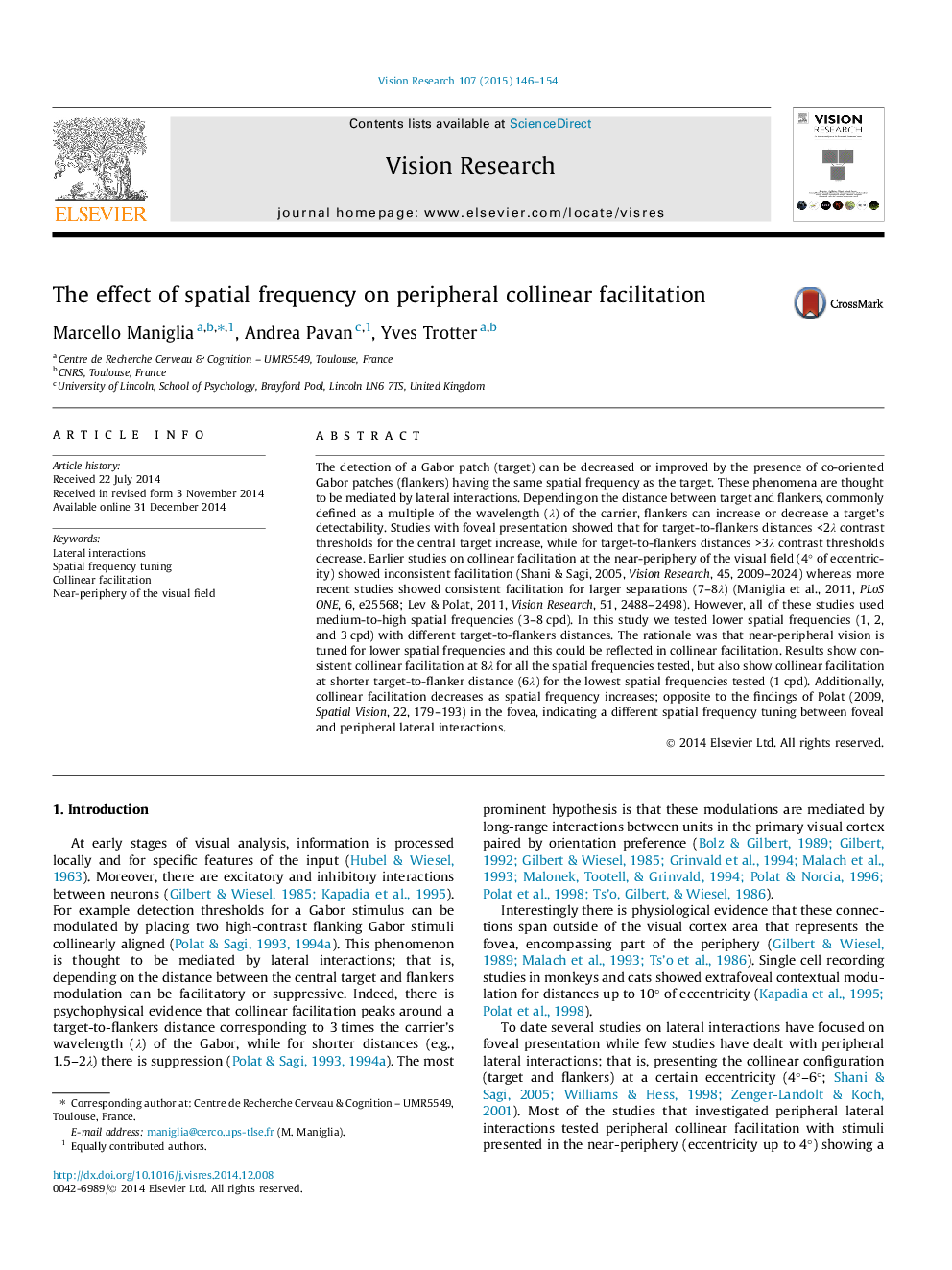| کد مقاله | کد نشریه | سال انتشار | مقاله انگلیسی | نسخه تمام متن |
|---|---|---|---|---|
| 6203389 | 1603187 | 2015 | 9 صفحه PDF | دانلود رایگان |
- Peripheral collinear contrast sensitivity decreases at high spatial frequencies.
- Consistent peripheral collinear facilitation for spatial frequencies from 1 to 6Â cpd.
- Peripheral collinear facilitation at short target-to-flankers distances for 1Â cpd.
The detection of a Gabor patch (target) can be decreased or improved by the presence of co-oriented Gabor patches (flankers) having the same spatial frequency as the target. These phenomena are thought to be mediated by lateral interactions. Depending on the distance between target and flankers, commonly defined as a multiple of the wavelength (λ) of the carrier, flankers can increase or decrease a target's detectability. Studies with foveal presentation showed that for target-to-flankers distances <2λ contrast thresholds for the central target increase, while for target-to-flankers distances >3λ contrast thresholds decrease. Earlier studies on collinear facilitation at the near-periphery of the visual field (4° of eccentricity) showed inconsistent facilitation (Shani & Sagi, 2005, Vision Research, 45, 2009-2024) whereas more recent studies showed consistent facilitation for larger separations (7-8λ) (Maniglia et al., 2011, PLoS ONE, 6, e25568; Lev & Polat, 2011, Vision Research, 51, 2488-2498). However, all of these studies used medium-to-high spatial frequencies (3-8 cpd). In this study we tested lower spatial frequencies (1, 2, and 3 cpd) with different target-to-flankers distances. The rationale was that near-peripheral vision is tuned for lower spatial frequencies and this could be reflected in collinear facilitation. Results show consistent collinear facilitation at 8λ for all the spatial frequencies tested, but also show collinear facilitation at shorter target-to-flanker distance (6λ) for the lowest spatial frequencies tested (1 cpd). Additionally, collinear facilitation decreases as spatial frequency increases; opposite to the findings of Polat (2009, Spatial Vision, 22, 179-193) in the fovea, indicating a different spatial frequency tuning between foveal and peripheral lateral interactions.
Journal: Vision Research - Volume 107, February 2015, Pages 146-154
